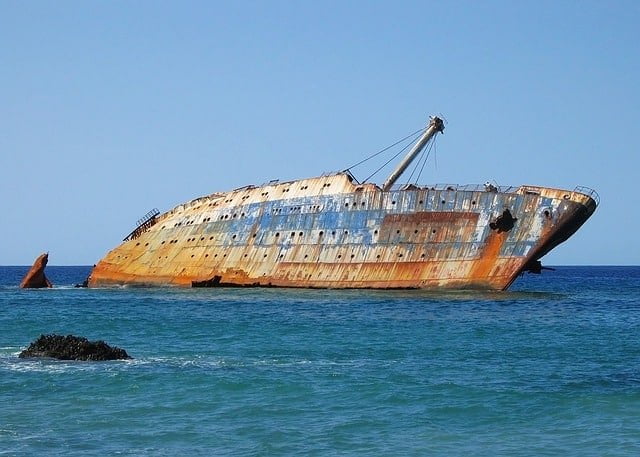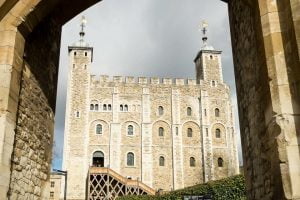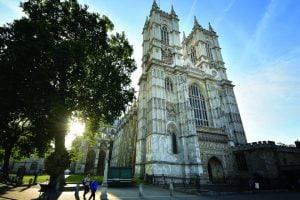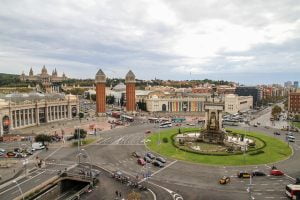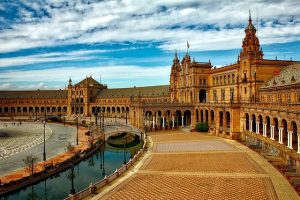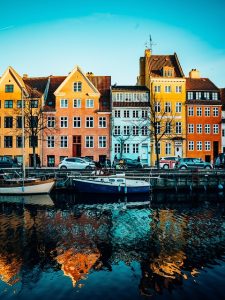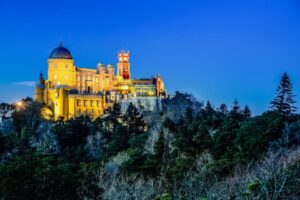Discover the beauty and attractions of the Canary Islands in this comprehensive guide for travelers. Explore each island's unique features, natural wonders and cultural experiences to help plan your perfect trip.
Introduction: Welcome to the Canary Islands
The Canary Islands are a group of seven Spanish islands located off the coast of Africa, in the Atlantic Ocean. They are known for their unique volcanic landscapes, diverse flora and fauna, and year-round warm weather. The islands have become a popular destination for travelers looking for a relaxing beach vacation, outdoor adventure, or a combination of both.
- Island hopping:
One of the unique characteristics of the Canary Islands is the ability to island hop. Each island has its own unique character and attractions. Whether you want to hike through dense forests, relax on pristine beaches, or explore the archipelago's rich history and culture, each island has something different to offer. - Geography and Climate:
The Canary Islands are located on the Tropic of Cancer, which results in a subtropical climate with moderate temperatures throughout the year. The islands are volcanic in origin, and each island has its own unique landscape. From the rugged cliffs of Tenerife to the rolling sand dunes of Fuerteventura, there is no shortage of natural beauty to explore. - Cultural diversity:
The Canary Islands have a rich cultural heritage shaped by a variety of influences over the centuries. The islands were inhabited by the Guanches, an indigenous people, before they were conquered by the Spanish in the 15th century. The location of the islands also made them an important stop for sailors and traders traveling between Europe and the Americas. As a result, the islands have a unique blend of Spanish, African and Latin American influences that can be seen in their architecture, music and cuisine.
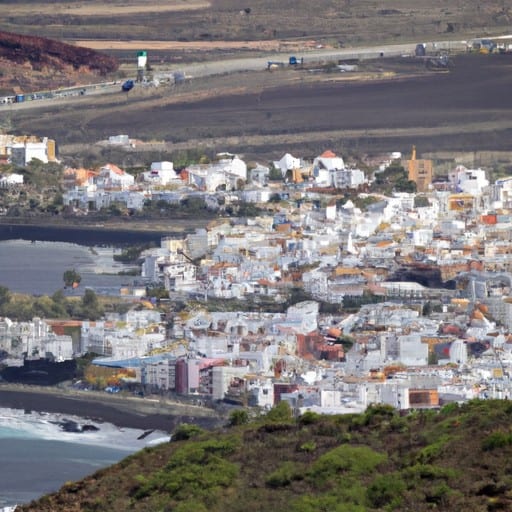
A picturesque view of a coastal town in the Canary Islands
Tenerife: the island of eternal spring?
Tenerife is the largest of the Canary Islands and is often referred to as the "Island of Eternal Spring" due to its mild year-round climate. It is a popular destination for tourists looking to soak up the sun and enjoy a variety of outdoor activities.
- climate:
Tenerife's climate is subtropical with temperatures ranging from the mid-60s to mid-70s Fahrenheit in winter and mid-70s to mid-80s Fahrenheit in summer. The island is also known for its low humidity, which makes it a comfortable place to visit all year round. - attractions:
Tenerife has a variety of attractions for travelers of all ages and interests. The island is home to Teide National Park, known for its stunning volcanic scenery and home to Spain's highest peak, Mount Teide. Visitors can take a cable car to the top for panoramic views of the island. Tenerife is also home to several water parks, including Siam Park, which was named the best water park in the world by TripAdvisor. Animal lovers will enjoy Loro Park, a zoo and marine park that is home to a variety of exotic animals and marine life. - Beaches:
Tenerife is known for its beautiful beaches, including Playa de las Americas and Los Cristianos. These beaches are popular with tourists and offer a variety of water sports and activities. For a more secluded beach experience, visitors can head to Playa de las Teresitas, located on the northeast coast of the island and known for its golden sand and clear waters.
Gran Canaria: a miniature continent
Gran Canaria is the third largest island in the Canary Islands and is known as a "miniature continent" due to its diverse landscapes and climate. The island offers visitors a unique combination of pristine beaches, rugged mountains and charming towns. Here are some of the highlights of Gran Canaria:
- Beaches:
Gran Canaria is home to some of the most beautiful beaches in the Canary Islands. Playa del Ingles and Maspalomas are two of the most popular beaches on the island, with white sand dunes and clear water. For a quieter beach experience, visitors can head to the secluded beaches of Puerto de Mogán, also known as "Little Venice" for its charming canals and colorful buildings. - Mountains:
Gran Canaria is home to the stunning Barranco de Guayadeque mountain range. The mountains offer visitors a variety of hiking trails and amazing views of the island. Roque Nublo is a must-see in the mountains, a towering rock formation considered a sacred site by the island's natives. - Cities:
Gran Canaria is home to some charming towns that are worth a visit. Las Palmas, the capital of the island, is a bustling city with a rich history and culture. Visitors can explore the historic district of Vegueta, which is home to several colonial buildings and museums. Turor is another charming town known for its picturesque streets and colorful houses.

Aerial view of Maspalomas dunes in Gran Canaria
Lanzarote: land of volcanoes and surreal landscapes
Lanzarote is the easternmost island of the Canary Islands and is known for its otherworldly landscapes and volcanic terrain. The island was formed by a series of volcanic eruptions and is now a UNESCO Biosphere Reserve. Here are some of Lanzarote's highlights:
- Volcanoes:
Lanzarote is home to several volcanoes, including Timanafia National Park, which is one of the island's most popular attractions. The park is home to over 25 volcanoes and offers visitors a unique experience to explore the lunar-like landscape. Visitors can take a guided tour of the park or enjoy a camel ride in the rough terrain. - Beaches:
Despite its volcanic terrain, Lanzarote is also home to some beautiful beaches. Playa Blanca and Papagayo are two of the most popular beaches on the island, with white sand and clear water. For a more secluded beach experience, visitors can head to the black sand beaches of Famara. - Cesar Manrique:
Lanzarote is also known for its famous artist and architect, César Manrique. Manrique helped preserve the island's natural beauty and worked to integrate art and architecture into the landscape. Visitors can explore some of his most famous works, including the Jameos del Agua and Mirador del Río. - wine:
Lanzarote is a unique wine region, where vines grow in volcanic ash. The wine produced on the island is known for its distinct taste and is a must try for wine lovers. Visitors can take a tour of the wine region and taste some of the local wines.
Fuerteventura: A Beach Lover's Paradise
Fuerteventura is the second largest in the Canary Islands and is known for its amazing beaches and crystal clear waters. With more than 150 km of coastline, the island is a paradise for beach lovers. Here are some of the highlights of Fuerteventura:
- Beaches:
Fuerteventura is home to some of the most beautiful beaches in Europe. The island's beaches are known for their white sand and turquoise waters, making them the perfect place to relax and soak up the sun. Some of the most popular beaches on the island include Playa de Sotavento, Playa de Cofete, and Corralejo Beach. - Water sports:
The island's clear waters and consistent winds make it a popular destination for water sports enthusiasts. Windsurfing and kitesurfing are two of the most popular water sports on the island, with competitions held throughout the year. Visitors can take lessons or rent equipment to try their hand at these exciting sports. - Natural landscapes:
While the beaches are the main attraction of Fuerteventura, the island also boasts some stunning natural scenery. The Corralejo Natural Park is home to miles of sand dunes, while the Betancuria Rural Park is a paradise for hikers and nature lovers.
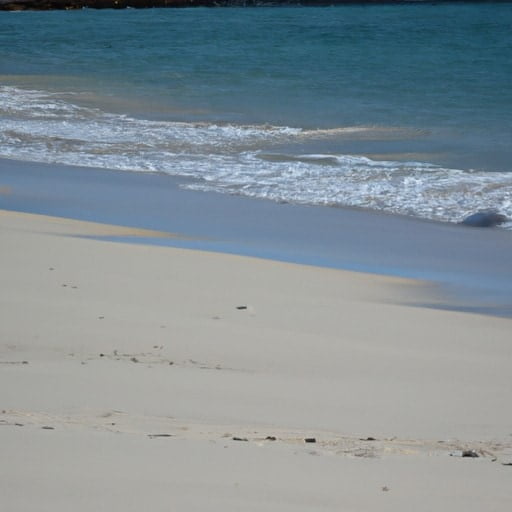
A beautiful white sandy beach in Fuerteventura
La Palma: the green jewel of the archipelago
La Palma is one of the smaller islands in the Canary Islands archipelago, but it is often called the "Green Jewel" for its lush forests, verdant hills and fertile valleys. The island is a paradise for nature lovers, hikers and stargazers, with an abundance of natural beauty to explore.
- natural beauty:
La Palma is known for its stunning natural beauty, with a variety of landscapes to explore. The island is home to dense forests, volcanic craters and towering mountains, all of which can be explored on foot or by car. The Roque de los Muchachos Observatory is a popular destination for stargazers, with some of the clearest skies in the world. - Hiking:
La Palma is a hiker's paradise, with a network of well-marked trails criss-crossing the island. The island's rugged terrain and diverse landscapes make for some challenging hikes, but the stunning views and natural beauty more than make up for the effort. Caldera de Taboriente National Park is a popular destination for hikers, with trails winding through ancient forests and past towering waterfalls. - Culture and history:
La Palma is also rich in culture and history, with several museums and historical sites to explore. The island's capital, Santa Cruz de la Palma, is a charming town with a rich colonial history, while the Archaeological Museum of La Palma offers a glimpse into the island's prehistoric past.
La Gomera: a paradise for nature lovers
La Gomera is a small island in the Canary Islands archipelago, and is often overlooked by tourists in favor of the larger, more well-known islands. However, for nature lovers, La Gomera is a true paradise, with plenty of natural beauty to explore.
One of the most impressive natural features of the island is its dense laurisilva forests, which are home to a variety of rare and endemic plant species. These forests are also home to a number of endemic bird species, including the bay dove and the bulldove.
In addition to its forests, La Gomera is also known for its rugged coastline, with dramatic cliffs and secluded coves perfect for swimming, snorkeling and diving. The island's beaches are also a draw for visitors, with some of the most beautiful and secluded spots only accessible by foot or boat.
For hikers, La Gomera is paradise, with a network of well-marked trails winding through the island's forests, valleys and mountains. One of the most popular trips on the island is the Garajonay National Park, a UNESCO World Heritage Site, which is home to the largest Lorisilva forest on the island.
But perhaps one of La Gomera's most unique features is its whistling language, Silbo Gomero, developed by islanders as a way to communicate across the island's rugged terrain. Today, Silbo Gomero is recognized as a UNESCO Masterpiece of the Oral and Intangible Heritage of Humanity, and visitors can take lessons to learn the language for themselves.
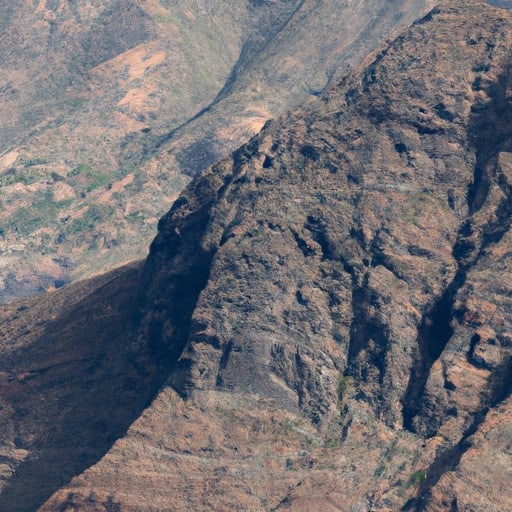
A panoramic view of the rugged landscape of La Gomera
El Hiero: the smallest and most remote island
El Hiero is the smallest and most remote of the Canary Islands, and is often overlooked by tourists in favor of the larger, more well-known islands. However, for those looking for an experience just off the beaten track, El Hiero is the perfect destination.
One of the island's most impressive features is its rugged volcanic landscape, which is home to a number of unique plant and animal species. Visitors can explore the island's volcanic craters, lava tubes and natural pools, perfect for swimming and snorkeling.
El Hiero is also known for its clear waters, which make it a popular destination for diving and snorkeling enthusiasts. The island's underwater world is bustling with life, including schools of colorful fish, octopuses and even sea turtles.
For hikers, El Hiero is paradise, with a network of well-marked trails winding through the island's mountains and forests. One of the most popular hikes on the island is the Camino de la Virgen, which takes visitors through the island's incredible natural beauty, including its volcanic craters and ancient forests.
But perhaps one of El Hiero's most unique features is its commitment to sustainable tourism. In 2000, the island became the first in the world to be completely self-sufficient in renewable energy, and today, it is a model of sustainable tourism practices. Visitors can explore the island's existing initiatives, including its wind and hydroelectric power plants, and learn more about how the island is working to preserve its natural beauty for future generations.
Canary cuisine: what's on the menu?
Canary cuisine is a delicious combination of Spanish, African and Latin American influences. With an abundance of fresh seafood, locally grown fruit and vegetables, and rich and delicious spices, the cuisine of the Canary Islands is a must-try for any foodie.
One of the most popular dishes in the islands is papas arrugadas, which literally translates to "wrinkled potatoes". These small boiled potatoes are usually served with a spicy sauce called mojo, which is made with garlic, olive oil, red pepper and vinegar.
Another must-try dish is gopio, a type of flour made from roasted grains used in a variety of foods, including breads, soups and stews. Gopio has been a staple of Canarian cuisine for centuries, and is now considered a symbol of the islands' cultural heritage.
Seafood is also a central part of Canarian cuisine, with fresh fish and shellfish caught daily from the waters surrounding the islands. Some of the most popular seafood dishes include calamari a la planche (grilled squid), pulpo a la gallega (Galician-style octopus) and sancocho (a hearty fish stew).
For meat lovers, the islands offer a variety of delicious options, including conejo en salmorejo (rabbit cooked in spicy sauce), chuletas (grilled or fried pork chops), and carne fiesta (a type of spicy sausage made from pork, garlic, and paprika).
And of course, no visit to the Canary Islands would be complete without trying some of the local cheeses and wines. Some of the most popular cheeses include queso de cabra (goat cheese) and queso ahumado (smoked cheese), while the islands' wines are known for their unique flavors and high quality.

A selection of traditional Canarian dishes
"Rich in culture": exploring the history and traditions of the islands
The Canary Islands have a rich and fascinating history dating back thousands of years. The islands were originally inhabited by the Guanches, a group of indigenous people who lived on the islands for centuries before the arrival of the Spanish in the 15th century. Today, visitors can learn about the Guanches and their way of life in museums and cultural centers throughout the islands.
In addition to Guanches, the Canary Islands have been influenced by a variety of cultures over the centuries, including Spanish, Portuguese and North African. This cultural diversity is reflected in the architecture, music and traditions of the islands.
One of the most iconic symbols of Canarian architecture is the traditional buildings decorated in white with green or blue wooden shutters, which can be seen throughout the islands. Another striking example of Canarian architecture is the cave houses carved into the volcanic rock in Gran Canaria and other islands.
Music is also an important part of Canarian culture, with a variety of instruments and traditional styles reflecting the diverse heritage of the islands. One of the most popular musical styles is called folklore, which includes lively rhythms and traditional instruments such as timpal (a small guitar-like instrument) and tambour (a type of drum).
The Canary Islands are also known for their lively festivals and celebrations, which take place throughout the year. Some of the most popular festivals include Carnival, which is celebrated throughout the islands and includes colorful parades, music and dancing; and Fiesta de San Juan, a midsummer celebration that involves lighting bonfires and jumping over them for good luck.
Outdoor Adventures: What activities await?
The Canary Islands offer a wide variety of outdoor activities for visitors to enjoy. With a mild climate and diverse landscapes, the islands are perfect for a trip to nature. Whether you're looking for an adrenaline-pumping adventure or a more relaxed way to enjoy nature, the Canary Islands have something for everyone.
One of the most popular outdoor activities on the islands is hiking. The islands are home to a number of well-marked trails that offer stunning views of the landscape. Some of the most popular hiking trails include the Masca Gorge in Tenerife, the Caldera de Taboriente in La Palma, and the Timanafia National Park in Lanzarote. These trips range in difficulty, so be sure to choose one that suits your fitness level.
Another popular activity is cycling. The Canary Islands offer a variety of routes for cyclists, from leisurely coastal walks to more challenging mountain climbs. Tenerife is particularly popular with cyclists, thanks to its steep mountain roads and world-class training facilities.
The islands' beaches also offer a variety of water sports, including windsurfing, windsurfing and kitesurfing. Fuerteventura is especially popular with surfers, thanks to its consistent waves and warm water temperatures.
For a more leisurely way to enjoy the water, visitors can take a boat tour around the islands. These tours offer a unique perspective on the volcanic landscapes of the islands and can often include stops at secluded beaches and coves.
Finally, for those looking for an adrenaline rush, the islands offer a variety of adventure sports. These include rock climbing, paragliding and bungee jumping. Although these activities are not for the faint of heart, they offer a unique way to experience the rugged terrain and amazing views of the islands.

Travelers explore the varied terrain of the islands
Mobility: What is the best means of transportation?
When it comes to getting around the Canary Islands, visitors have several different options to choose from. The best mode of transportation will depend on the route and your personal preferences. Here are some of the most popular options for getting around the islands:
- 1. Car rental:
Car rental is a popular option for those who want to explore the islands at their own pace. Most major car rental companies have locations at airports and ferry terminals. Keep in mind that driving can be challenging on some of the islands' narrow and winding roads. - 2. Public transportation:
The islands have a developed public transportation system that includes buses and ferries. Buses are the most common means of transportation for getting around the islands, and they are cheap and reliable. Ferries are a great option for island hopping and offer a scenic way to see the coastline. - 3. Taxis:
Taxis are widely available on the islands, and are a convenient option for short trips or getting to and from the airport. Keep in mind that fares can be expensive, especially for longer distances. - 4. Cycling:
Biking is a great way to explore the islands, and many accommodations offer bike rentals. Keep in mind that some of the islands have steep hills and challenging terrain, so this option is best for those comfortable with cycling. - 5. Walking:
For those staying in one of the towns or cities of the islands, walking is a great way to get around. Many of the islands' attractions are within walking distance of each other, and this option is free and good for the environment.
Accommodation: where to stay during the visit?
Choosing the right places to stay is an important part of any trip, and the Canary Islands offer a wide variety of options to suit any budget and travel style. Whether you're looking for a luxury resort, a budget hostel or a cozy apartment, you'll find plenty of options on the islands. Below are some of the most popular types of accommodation in the Canary Islands:
- 1. Hotels:
The islands have a wide variety of hotels, from budget-friendly options to luxury resorts. Many of the hotels are located in the main tourist areas, such as Playa de las Americas in Tenerife and Puerto del Carmen in Lanzarote. - 2. Apartments:
Apartments are an excellent option for those who want a little more space and privacy. Many of the apartments on the islands are located in residential areas, and they offer a more authentic experience than staying in a hotel. - 3. Hostels:
Hostels are a popular option for budget travelers, and there are plenty of options in the Canary Islands. Many of the hostels offer shared dorm rooms, as well as private rooms for those who want a little more privacy. - 4. Villas:
For those who want a little more luxury and privacy, villas are an excellent option. There are plenty of villas to rent on the islands, and they offer a great way to experience the islands in style.
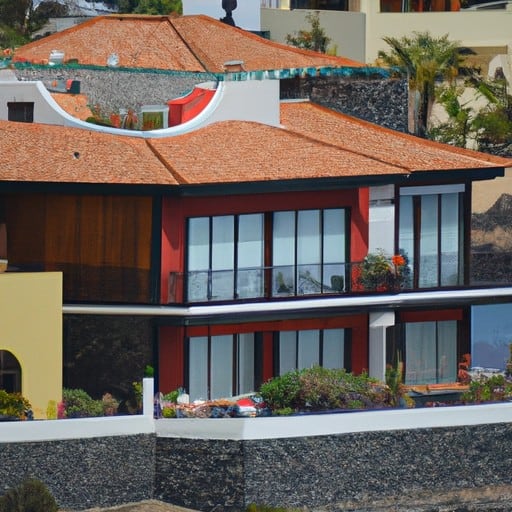
A charming hotel on the beach in the Canary Islands
When to visit: What is the best time of year?
The Canary Islands are a year-round destination, thanks to their warm and sunny climate. However, the best time to visit depends on what you want to do and see on the islands. If you are looking to soak up some sun and enjoy the beaches, the summer months of June to August are the most popular. During this time, temperatures can reach up to 30 degrees Celsius, making it the perfect time for swimming, sunbathing and water sports. However, be prepared for larger crowds and higher prices during this peak season.
If you're looking for a quieter and more affordable time to visit, the shoulder seasons of April to May and September to November are a great option. In these months, the weather is still warm and sunny, but the crowds are smaller and the prices are lower. It's also a great time to explore the natural beauty of the islands, as the landscapes are lush and green after the winter rains.
For those interested in outdoor activities such as hiking and biking, the winter months of December through February offer cooler temperatures and less crowded trails. However, be prepared for rain and wind during this time, especially in the higher elevations.
Another factor to consider when planning your trip is the festivals and events that take place on the islands. The most famous event is the carnival, which takes place in February or March, depending on the island. This colorful and vibrant celebration is a must see for anyone visiting during this time. Other festivals and events include the Fiesta de San Juan in June, the Bajada de la Virgen in La Palma in July, and the Almond Blossom Festival in February in Gran Canaria.
Festivals and events: what's happening on the islands?
The Canary Islands are known for their lively and colorful festivals and events throughout the year. From religious celebrations to music festivals, there is always something going on in the islands. One of the most famous events is the carnival, which takes place on all the islands. This vibrant and colorful celebration resembles a carnival in Rio de Janeiro, with parades, costumes and music. Each island has its own unique twist on carnival, so be sure to check out the one closest to you.
Another popular event is the Fiesta de San Juan, which takes place in June. This festival celebrates the summer solstice and features bonfires, fireworks and traditional Canarian food and drink. This is a great way to experience the local culture and traditions.
Bajada de la Virgen is another important event that takes place in La Palma every five years. This religious celebration includes a procession in which a statue of the Virgin Mary is carried from the mountains to the town of Santa Cruz de la Palma. The event attracts thousands of visitors from all over the world and is a unique experience.
Music lovers will enjoy the many music festivals held on the islands throughout the year. The Canarias Jazz & Más Festival in Gran Canaria is a must-see for jazz lovers, while the WOMAD Festival in Fuerteventura brings together musicians from around the world for a celebration of world music.
If you're a foodie, be sure to check out the many food and wine festivals on the islands. The Fiesta del Queso restaurant in La Palma celebrates the island's famous goat cheese, while the Tenerife Wine Festival is a celebration of the island's wine culture.
Travel tips: how to get the most out of your trip
- Plan ahead:
The Canary Islands offer a wide variety of activities and attractions, so it's important to plan in advance to get the most out of your trip. Decide which islands you want to visit, what activities you want to do and where you want to stay. - 2. Pack properly:
The weather in the Canary Islands can be unpredictable, so be sure to pack for all types of weather. Bring comfortable shoes for hiking and walking, a bathing suit for the beach, and a light jacket for a cooler evening. - 3. Car rental:
Renting a car is the best way to explore the islands and gives you the flexibility to go where you want, when you want. Most rental agencies have airport pick-up and drop-off points, making it easy to start your adventure. - 4. Learn some basic Spanish:
Although English is widely spoken, learning basic Spanish can be helpful when navigating the islands and communicating with the locals. - 5. Try the local cuisine:
The Canary Islands have a unique and delicious cuisine, so be sure to try some of the local specialties such as papas arugadas (wrinkled potatoes) with mojo sauce, fresh seafood and local cheeses. - 6. Book activities in advance:
If you plan to do tours or activities, it is recommended to book in advance to avoid disappointment. Popular activities such as whale watching and walking tours can fill up quickly. - 7. Use public transportation:
If you are not comfortable driving or do not want to rent a car, the islands have a good public transportation system. Buses are cheap and can take you to most parts of the islands. - 8. Staying in local accommodations:
Staying in a local guesthouse or apartment can give you a more authentic experience and help support the local economy.
9. Respect the local customs and traditions:
The Canary Islands have a rich history and culture, so it is important to respect the local customs and traditions. Dress modestly when visiting religious sites and be careful about noise levels in residential areas.
Safety and Health: What precautions should you take?
The Canary Islands are generally safe for tourists, but it is always important to take precautions to ensure a safe and healthy trip.
Here are some tips to keep in mind:
First, be aware of your surroundings and take basic safety precautions such as not leaving your valuables unattended and avoiding poorly lit areas at night. Petty theft can occur, especially in busy tourist areas, so take good care of your belongings.
Second, it is important to protect yourself from the sun. The Canary Islands have a subtropical climate and the sun can be intense, even in the cooler months. Be sure to wear sunscreen, a hat, and sunglasses to protect your skin and eyes.
Third, while tap water is generally safe to drink on the islands, it is recommended to stick to bottled water to avoid potential health problems. In addition, be sure to wash your hands often and practice good hygiene to avoid getting sick.
Finally, if you plan to do outdoor activities such as hiking or water sports, be sure to take appropriate safety measures. Wear appropriate footwear and clothing for the activity, and follow all safety instructions given by tour guides or rental companies.
In terms of healthcare, the Canary Islands have a good level of medical care, but it's always a good idea to have travel insurance that covers any medical emergencies. Pharmacies are readily available on the islands, and most over-the-counter medications are available without a prescription.
If you have pre-existing medical conditions, be sure to bring enough medication with you for the duration of your trip and consult your doctor before traveling. It is also recommended to bring a copy of your medical records with you in case of an emergency.
Responsible tourism: how to travel sustainably
As a responsible traveler, it is important to be aware of the impact your tourism has on the environment and local communities. Here are some tips for a sustainable trip to the Canary Islands:
First, consider staying in locally owned accommodations and supporting small businesses. This not only supports the local economy but also gives you a more authentic experience of the islands.
Second, pay attention to your water and energy consumption. In an area where water is a scarce resource, try to take shorter showers and turn off lights and air conditioning when not in use.
Third, reduce waste by bringing your own reusable water bottle and shopping bag. Avoid single-use plastics whenever possible and dispose of your waste responsibly.
Fourth, respect local culture and traditions. Learn some Spanish phrases and try the local cuisine. Religious sites must be respected and dressed appropriately when visiting them.
Finally, be aware of your impact on the environment when participating in outdoor activities. Stick to designated trails when hiking and avoid damaging fragile ecosystems. Respect the wild animals and avoid any activity that exploits them.
Conclusion: Your Canary Island adventure awaits
In conclusion, the Canary Islands are a truly unique and diverse destination that offers something for every type of traveler. From the stunning natural scenery and outdoor adventures to the rich history and culture, the islands are sure to leave you in awe. Whether you're looking for a relaxing beach holiday or an action-packed adventure, the Canary Islands have it all.
So what are you waiting for? Start planning your trip to the Canary Islands today and get ready for an unforgettable adventure. With its year-round warm climate, breathtaking scenery and friendly locals, the islands are the perfect destination for anyone looking for a unique and unforgettable experience.
The Canary Islands guide for travelers:
| an island | Attractions | Cost in NIS | Best time to visit |
|---|---|---|---|
| Tenerife | Teide National Park | 184.00 | spring and summer |
| Gran Canaria | Mespalomas dunes | 175.00 | All year round |
| Fuerteventura | Kofta Beach | 122.00 | spring and summer |
| Lanzarote | Timanfia National Park | 168.00 | All year round |
With its diverse landscapes, vibrant culture and countless activities, the Canary Islands offer something for every traveler. Plan your visit to this Atlantic paradise and create unforgettable memories.

